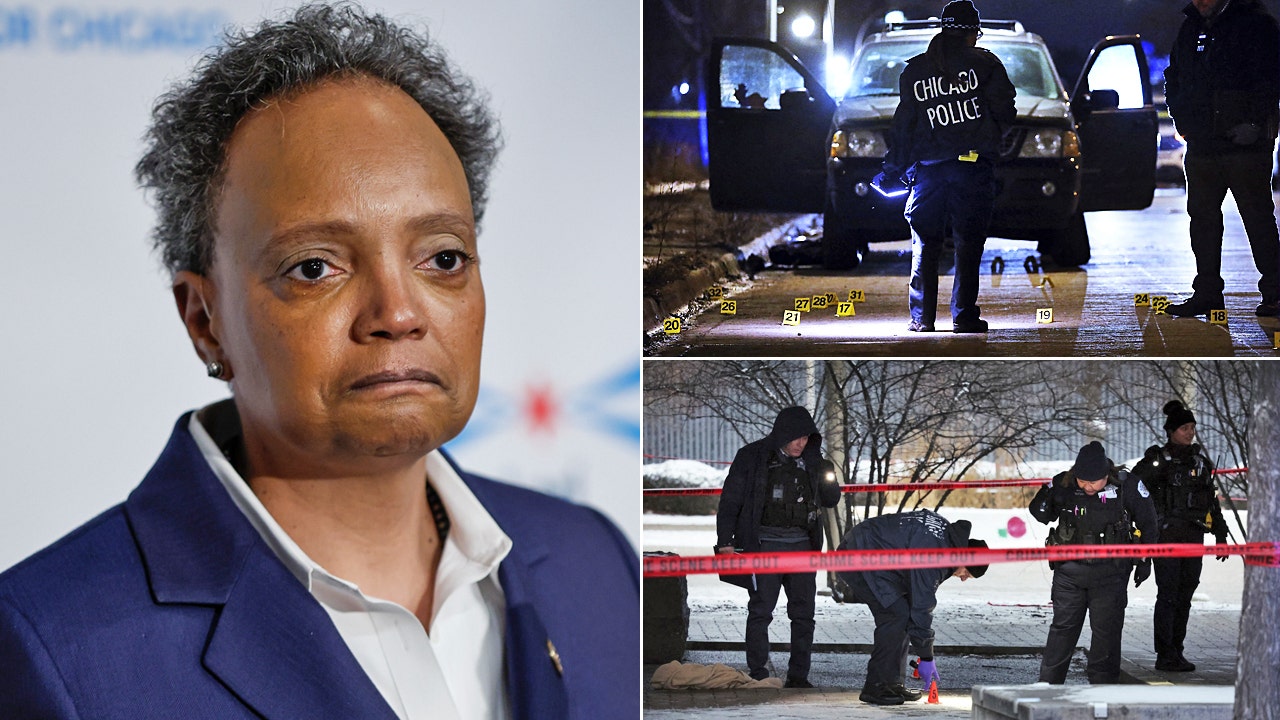When I was in prison in New York in 2011, we had a name for Rikers Island: The Wild West. I’d come from an upstate county several hours north of that, so I’d never been inside the notorious New York City jail complex just across the East River from LaGuardia Airport. But I listened aghast at the tales of a teeming and lawless lockup beset by drugs, sex and violence. From where I sat in an only-mildly chaotic state prison, the place sounded terrifying.

As it turns out, it was probably even worse than I thought—and Reuven Blau and Graham Rayman’s new book of the scandal-plagued correctional complex lays it out in graphic, stomach-churning detail. Rikers: An Oral History opens with some little-known details about the complex’s history: It was founded on top of a literal garbage dump. That was in the 1800s, and since then things have only gotten worse. Violence is rising, guards aren’t showing up for work and more detainees died behind bars last year than in any other year since at least 2013.
Told through the accounts of more than a hundred guards, former prisoners, lawyers and public officials, the book explores the inner workings of a broken system and the ripples of trauma it leaves behind.
Keri Blakinger: Why did this feel like the necessary moment for a book like this?
RB: I’ve been covering Rikers Island for 20 years, and Graham’s done it longer than me. For both of us, there’s a bit of personal frustration, we write about some of these issues over and over and over again. And this was an amazing opportunity to highlight how some of these issues have been going on for decades. It gets some level of coverage, and then the administration makes promises and there’s some level of a solution—but then it just comes back up again. And in this project we were able to highlight how these problems are not necessarily new. There’s a lot of new attention to Rikers Island, but these problems have been there forever.
KB: Even though you have both been doing this for so long, there’s a lot of previously unreported material in here. Are there any stories that particularly stuck with you from your reporting?
GR: There’s a lot, but one of the main ones is the story that Nellie Kelly tells about the reverberations of her brother’s death, 10 years later. Ronald Spear was murdered in 2012 by a correction officer who basically beat him to death, and then there was a massive cover-up. It was an attempt to turn Spear into somebody who had attacked the officers and they were defending themselves—which is ridiculous, because he was frail and ill. And she talked about how ten years later when she’s making spaghetti, she can still hear him telling her to make it spicy. And she’s like, “I’m not making it spicy for you!”
What that illustrates to me is something that I think the public loses sight of: When these horrible incidents happen in the jails, the ripples flow outward for years and years afterwards. It’s not like they just go away once the investigation is over.
RB: It’s hard to remember them all. But for me one of the things that was really eye-opening was the concept of bullpen therapy, which is sort of unique to the New York City process. That’s when detainees are taken out at three or four in the morning for court, and the whole process takes all day. It’s soul-sucking and it plays into trying to convince people to take plea deals. A few people who had done several stints brought up this issue as the worst part of the entire experience. They could be on Rikers Island, they could be around all the other craziness—but not getting dragged to and from court and spending the entire day waiting and waiting and waiting in bullpens.
GR: Bullpen therapy—the idea that people would plead guilty to a crime rather than continue to experience the process of going back and forth to court—is just extraordinary. It illustrates a failed system.
KB: What is the thing that people most commonly misunderstand about Rikers Island?
GR: It’s not just one jail. It’s actually a huge complex of multiple jails. All of them are quite large—each one houses thousands of people when they’re at capacity. There was a time when there were more than 20,000 people in the jails. It’s a city within a city.
RB: For me there’s a couple of things and I think the biggest one is not unique to Rikers: It’s the idea that you do the crime, do the time. And you don’t do the crime if you don’t want to end up in a place like that. But the thing is, no one’s been sentenced to death. And there’s multiple deaths every year, including this year. The inability to just get basic medical care there is insane. There’s a perception that you go to jail and you’re looked after. But there are thousands of missed medical visits every year, and there’s ongoing litigation over that. And I think that speaks to the broader sense that people are not seen as people there. There’s just a lack of humanity.
When these horrible incidents happen in the jails, the ripples flow outward for years and years afterwards.
GR: Following on that, we interviewed an expert on heat-related illnesses who testifies all over the country doing assessments of prisons and jails, named Dr. Susi Vasallo. And she said that New York views itself as this progressive place but she said that what she saw at Rikers was as bad as any of the prisons that she saw in Mississippi or Alabama. To me, that just cuts to the heart of the thing: Here’s a city that thinks it’s so progressive and yet it allows this situation on Rikers—the conditions, the violence, all of the issues—to persist decade after decade after decade without really addressing them.
KB: How did you grapple with the perceptions of credibility of inmates who are typically—if unfairly, in my opinion—viewed as unreliable or untrustworthy, but in this case they are a large part of your narrative?
RB: I think that’s what the book is about. It’s about these stories and letting people know that these are human beings. Sure, some people have done some terrible things—but it doesn’t mean that they’re not human beings, who have experienced this system in this way that’s just inhumane. It doesn’t mean that their experiences are lacking in a way that we shouldn’t take seriously and amplify. And on some level it doesn’t make sense, it belies logic, to say that if somebody committed a crime then we shouldn’t believe their experience. Their experiences are real and they matter and society should be aware of them.
GR: We didn’t want to write this from 10,000 feet—we wanted this to be very intimate. And if you’re writing about a bakery, you go to the bakers.
KB: One of the recurring themes of this book is the incredible amount of violence behind bars. Are you worried about how readers will contextualize that, and whether they will see it as proof that inmates are bad people—or as proof that the system is broken?
GR: Well, I’m hoping they’ll see that the system is broken. That’s very broadly what that violence illustrates—a system that cannot just not be functional.
RB: There is an obsession with you know the fights and the violence—like in Oz, on television. What we tried to do is say, “Look, some of the stuff is probably even worse than you can imagine, worse that could be scripted. But also, there are people who are experiencing this.” And they experience it in the moment —and then it doesn’t leave you.
For example, I interviewed somebody who did time and afterwards would go to the bodega all the time. The woman behind the counter at one point told him, “Oh I know you served some time.” He asked why and she said she could just tell because he never smiled. It’s real experiences and it’s real trauma, and that’s what we were trying to explain to readers.
KB: Did writing this change anything about how you see Rikers?
It doesn’t make sense to say that if somebody committed a crime then we shouldn’t believe their experience.
GR: The main character in the book is obviously Rikers itself and the people who move through it and their experiences. But if you look at the stories, there’s some similarities between the experiences of correctional officers and the experiences of people being held in Rikers. So when I see aggressive folks who want to keep everything the way it is and not move to borough jails and just keep it all status quo, I think: Aren’t you actually subjecting your supporters to the same experiences that people who are being held there are experiencing? So that was one thing that surprised me, but it didn’t particularly change my view overall.
KB: This book spans several decades. After examining Rikers in that sort of long view, do you think that things are getting better at all?
GR: My instinct is it’s hard to tell. And one of the reasons it’s hard to tell is because of the closed nature of its physical location. It’s very hard for us as media to get in there. So we have to rely on external accounts and statistics from the agency, which—as we noted in the stats chapter—have been manipulated in the past to present an inaccurate picture of what was happening. I think the big question is: Should this city support receivership or can it continue to try to improve things as it is? It seems to me that the forces want to keep Rikers right where it is and don’t want to spend the money on [replacing it with] borough jails that are currently in the ascendance.
RB: It’s not so much about getting better or getting worse. It’s that these problems persist. No one is saying that these issues are going away. At any given time there might be a few less deaths. The stabbings might go down. Solitary numbers might be adjusted. The stats are all over the map. One thing that’s very clear from anyone you talk to is that it’s still an absolute nightmare place to be. And major, major problems still exist.
KB: Did writing this change your view of our society’s relationship to incarceration?
GR: It made me feel a lot stronger that Americans need to really think about what it is we want these institutions to do. We should all be considering what we really want out of these institutions.


























































